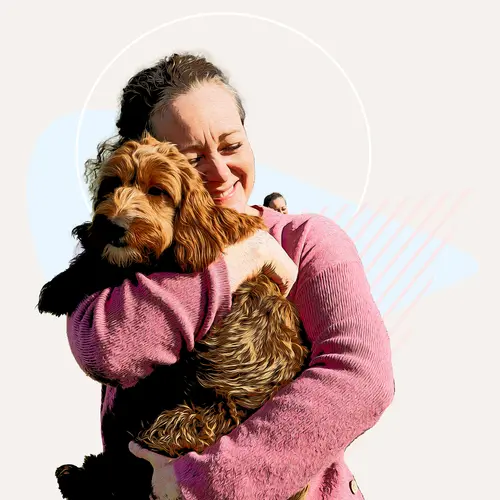When you're about to welcome a new member into your family, you put a lot of effort into preparing your home. Even if your newest addition has four legs instead of two, you want to make sure your house is ready.
"Dogs don't come knowing the rules. They don't know they shouldn't chew on the expensive Chinese fern you have sitting in your dining room," says Patricia McConnell, PhD. She's a certified applied animal behaviorist and author of Love Has No Age Limit: Welcoming an Adopted Dog Into Your Home. "Just as you would for an infant, you need to put yourself in your dog's paws and look at the house from their perspective."
Before you bring your new pet home, here are a few things you can do to prepare.
Dog Proof
Dogs don't have hands. They explore their world with their mouths. So anything you don't want licked, chewed, or eaten needs to be put away before your new dog arrives. That includes household items that can be risky to pets, such as:
- Cleaning products and lawn chemicals
- Pest control products
- Human medicines
- Poisonous plants, including azaleas, some lilies, daffodils, buttercups, and hyacinths
- Toys with small parts (dogs can choke on them, just like babies)
Replace these doggie no-no's with items that are safe for your dog to explore. "Just like we give babies teething rings, we need to give dogs oral outlets for them to chew on," says Meghan Herron, DVM, DACVB. She's an assistant professor of behavioral medicine in the department of veterinary clinical sciences at Ohio State University. She suggests stocking up on rubber chew toys and stuffed animals that you don't mind your dog tearing apart.
Pooch-Ready Basics
As excited as you are about your new pet, you don't need to splurge and buy every trendy accessory on the market. These basics are all you'll need:
Crate.Crate training will prevent your new puppy from using your dining-room table leg as a bathroom when you can't keep an eye on him. The crate should be at least big enough for your dog to stand up and turn around in. Buy one that's a little bigger so he can grow into it.
Collar and leash. The collar doesn't need to be diamond-studded. Your dog won't know the difference. "Just a regular flat buckle collar -- something that has a secure ring that can hold a rabies tag, ID, and license," Herron says.
Bed. Again, nothing fancy is needed. You just want a cozy space where your dog can feel comfortable and secure.
Find a Vet You Trust
Your veterinarian is just as important to your dog's health as your pediatrician is to your kids' health. Find one you trust. Ask friends for recommendations, and then interview the vet to be sure.
"You don't just want to meet the veterinarian. You want to meet the office staff, the technicians. You want to feel welcome," McConnell says.
Ask your vet for tips on what type of food to buy and how often you should bring your dog in for checkups. Also ask about spaying or neutering your pet if that hasn't already been done. And find out about microchipping, which can help return your dog to you if he ever runs away.
Set Limits
When you first bring your dog home, close doors and set up baby gates to keep him in a confined area. This is good advice for both a new puppy and an older dog.
"You want your dog to have as little time as possible out of your eyesight," McConnell says. "Even if they're 8 years old and house-trained, they're not house-trained to your house."
Close off your pet's outside space, too. Build a fence around your yard if you plan to let your dog go off-leash.
To make sure your dog behaves, sign him up for training classes ahead of time. "You want to look for positive reinforcement-based training," Herron says. She recommends hiring a trainer with the certification "CPDT" (Certified Professional Dog Trainer).
Make a Plan
Adopting a pet involves more than household preparation. "It's lifestyle preparation," Herron says. Decide who'll be in charge of house-training, feeding, and exercising your pet, and when during the day these activities will be done.
Come up with some rules as a family. Which rooms or pieces of furniture are off-limits? Where do you want the dog to sleep? Whatever you decide, everyone needs to be consistent and stick to the plan.
"It's not fair to a dog to have confused expectations that vary from person to person. It's like having a language in which you're changing the word for 'chair' every day," McConnell says. "Dogs need consistency."
Stick to your plan, but don't expect your dog to do the same. Just like children, dogs don't always behave and follow the rules.
"It takes dogs about a year to settle in," McConnell says. "It's very easy to feel either worried or frustrated if, after a month or two, things aren't perfect. The fact of the matter is, it just takes time."

